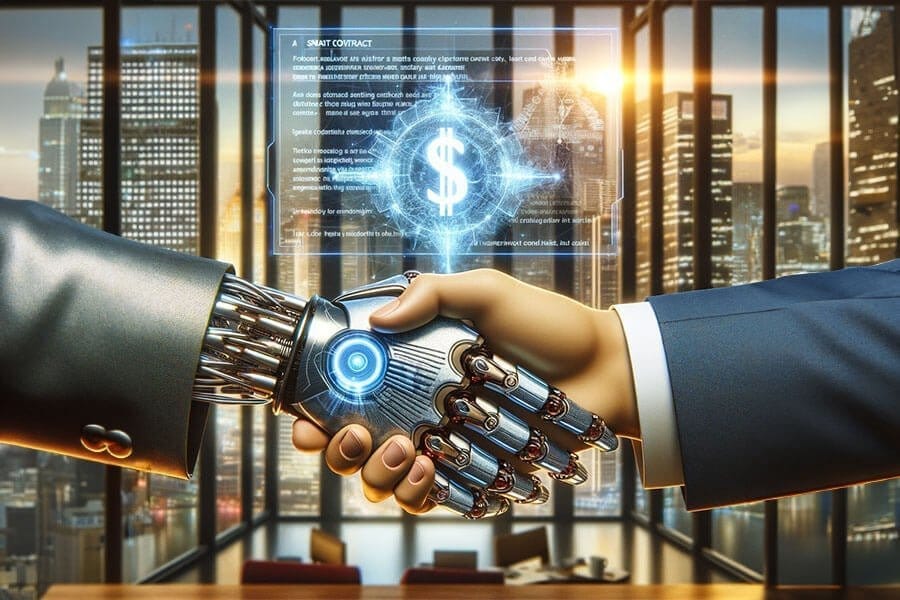The Future Of Legal Agreements: Harnessing The Power Of Smart Contracts
The Future of Legal Agreements: Harnessing the Power of Smart Contracts

- What Is A Dao And How Can You Participate
- The Unseen Hero In The Fight Against Financial Fraud: Blockchain Technology
- Embracing The Future Of Digital Identity: A Guide To Decentralized Solutions For Enhanced Privacy
- What Is A Dao Decentralized Autonomous Organization
- Bitcoin Halving: A Catalyst For Cryptocurrency Market Volatility
In recent years, the world of law has undergone a significant transformation with the emergence of smart contracts. These self-executing contracts with the terms of the agreement written directly into lines of code have the potential to revolutionize the way we think about legal agreements. By automating the enforcement and execution of contracts, smart contracts can save time, reduce costs, and increase efficiency. But how exactly do they work, and what are the benefits of using them for automated legal agreements?
Understanding Smart Contracts
Imagine you’re renting an apartment. The traditional way of doing things would involve signing a paper contract, agreeing to the terms, and then having to rely on your landlord to uphold their end of the deal. With a smart contract, things work a bit differently. The terms of the agreement are programmed into a digital contract, which is then stored on a blockchain. This blockchain technology ensures the integrity of the contract, making it tamper-proof and transparent.
How Smart Contracts Work
Smart contracts work by using a set of predetermined rules and triggers to automate the execution of the contract. These triggers can be set to respond to specific actions, such as the payment of rent or the completion of a project. When the trigger is activated, the contract is executed automatically, eliminating the need for intermediaries ormanual intervention.
For example, let’s say you’re a freelancer working on a project for a client. You’ve agreed to complete the project for a set fee, and the client has agreed to pay you upon completion. With a smart contract, the payment can be automated, ensuring that you receive your payment as soon as the project is completed.
Benefits of Using Smart Contracts
So, why use smart contracts for automated legal agreements? Here are just a few of the benefits:
- Increased Efficiency: Smart contracts automate the execution of agreements, saving time and reducing the need for manual intervention.
- Reduced Costs: By eliminating the need for intermediaries and reducing the risk of disputes, smart contracts can save you money.
- Improved Accuracy: Smart contracts are programmed to follow specific rules, reducing the risk of human error.
- Enhanced Security: Blockchain technology ensures that the contract is tamper-proof and secure.
Real-World Applications of Smart Contracts
Smart contracts are already being used in a variety of industries, from supply chain management to real estate. Here are a few examples of real-world applications:
- Supply Chain Management: Smart contracts can be used to automate the transfer of goods and payment, reducing the risk of disputes and increasing efficiency.
- Real Estate: Smart contracts can be used to automate the transfer of ownership and payment, making the buying and selling process faster and more efficient.
- Insurance: Smart contracts can be used to automate the payment of claims, reducing the risk of disputes and increasing efficiency.
The Future of Smart Contracts
As the technology behind smart contracts continues to evolve, we can expect to see even more innovative applications in the future. From the creation of decentralized autonomous organizations (DAOs) to the use of smart contracts in voting systems, the possibilities are endless.
In conclusion, smart contracts have the potential to revolutionize the way we think about legal agreements. By automating the enforcement and execution of contracts, smart contracts can save time, reduce costs, and increase efficiency. As the technology continues to evolve, we can expect to see even more innovative applications in the future.
